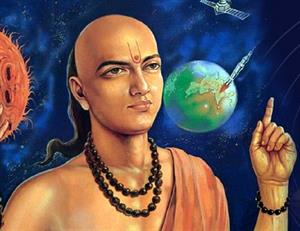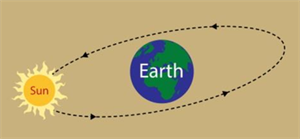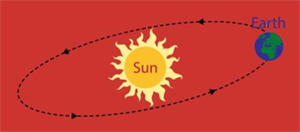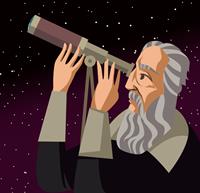PDF chapter test TRY NOW
About 4000\ years ago in ancient India, the practice of astronomy was mentioned in Rig Veda. The contribution of Indian scholars is vast in the field of astronomy. 



Aryabhata:
Aryabhata (476 - 550\ C.E) is a well-known astronomer of ancient India. He has written many books on science, out of which ‘Aryabhatiya’ is a writing based on astronomy. At the age of 23 in 499\ century, he formulated the diameter of the Earth close to the present known value which is 12,742\ km.

Aryabhata
Explanations given by Aryabhata:
- He opposed the view that the Earth is ‘Achala’ (immovable) and stated that it is a sphere which rotates on its axis.
- He estimated the hours in a day as 23\ hours, 56\ minutes and 4.1\ seconds.
- He stated the reflection of Sunlight on the Moon and the planets.
- He explained 'Lunar eclipse' as the falling of Earth's shadow on the Moon, and 'Solar eclipse' as the falling of Moon's shadow on the Earth.
- He also found the distance between the Earth and Moon.
Heliocentric theory:
In olden days, people believed that the Earth was at the centre of the universe and all the other planets, the moon, the sun and the stars were orbiting around it.

Representation of geocentric theory
Nicolaus Copernicus, a Polish priest and astronomer, proposed the heliocentric theory.
Heliocentric theory states that it was not the Earth, but the Sun was at the centre of the solar system, and the other planets revolve around it.
He gave this idea about 500\ years ago, but it was published in the year of his death in 1543.

Representation of heliocentric theory
This idea was confirmed by Galileo Galilei in 1609 when he designed the telescope. He observed moons of Jupiter, phases of Venus and rings of Saturn through his telescope and argued that all the planets revolve around the Sun.

Galileo Galilei
Later by various scientists, these ideas were developed and proved with the help of evidence to support it.
Reference:
https://upload.wikimedia.org/wikipedia/commons/9/9f/Aryabhata-5_%281%29.jpg
